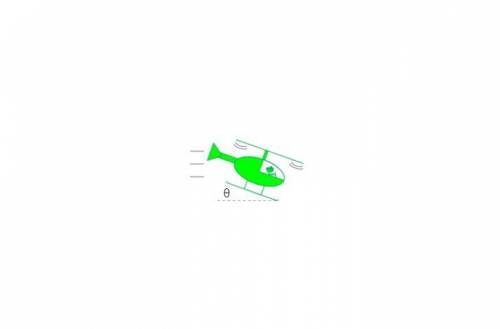
An engineer wants a 4000kg helicopter to fly horizontally (neither gaining nor losing altitude) and increase speed at a rate of 2.6m/s2 despite experiencing a 1000N drag.
How many forces are acting on the helicopter?
Are all the forces on the helicopter balanced?
What is the magnitude of the net force on the helicopter?
What is the strength of the horizontal thrust component?
What is the strength of the thrust?
At what angle, θ, does the helicopter need to tilt?


Answers: 2


Other questions on the subject: Physics


Physics, 22.06.2019 12:20, drewefielder6198
Which of the following situations is impossible? a) an object has velocity directed east and acceleration directed east. b) an object has zero velocity but non-zero acceleration. c) an object has constant non-zero velocity and changing acceleration. d) an object has velocity directed east and acceleration directed west. e) an object has constant non-zero acceleration and changing velocity.
Answers: 2

Physics, 22.06.2019 14:40, haileyjones732
How does an observation about an object differ from an inference about that object
Answers: 1

Physics, 22.06.2019 19:30, paulstanley972
Visualize the problem and identify special cases first examine the problem by drawing a picture and visualizing the motion. apply newton's 2nd law, ∑f⃗ =ma⃗ , to each body in your mind. don't worry about which quantities are given. think about the forces on each body: how are these consistent with the direction of the acceleration for that body? can you think of any special cases that you can solve quickly now and use to test your understanding later? one special case in this problem is if m2=0, in which case block 1 would simply fall freely under the acceleration of gravity: a⃗ 1=−gj^.
Answers: 1
You know the right answer?
An engineer wants a 4000kg helicopter to fly horizontally (neither gaining nor losing altitude) and...
Questions in other subjects:


Mathematics, 30.10.2020 01:50

Biology, 30.10.2020 01:50


Chemistry, 30.10.2020 01:50





Mathematics, 30.10.2020 01:50



